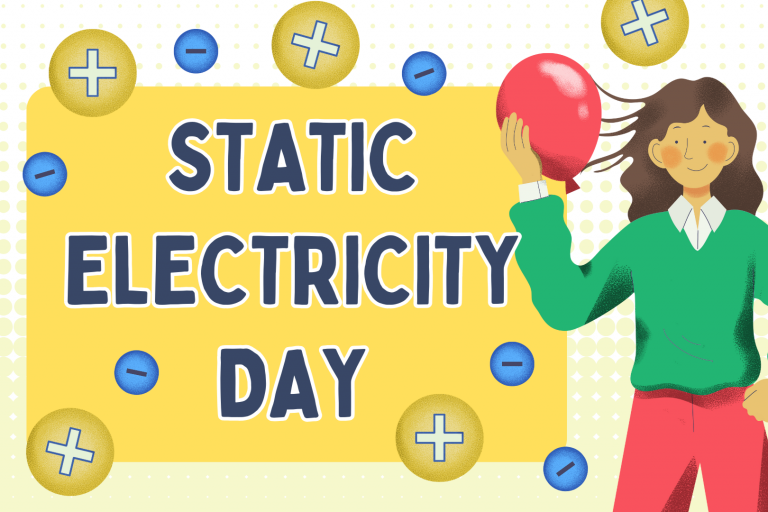On 9 January, we celebrate National Static Electricity Day, a day dedicated to the fascinating phenomenon that adds a little spark to our lives. Whether it’s a surprise zap from a doorknob, or the fun of making your hair stand up with a balloon, static electricity is a part of everyday life.
Static electricity is a build-up of electricity in one place, which is the result of an imbalance between positive and negative charges in objects. When two materials are rubbed together, electrons can transfer from one material to the other, creating a static charge. When it is discharged, it often results in a small shock. A good example of this is if you rub your feet on a carpet and create a static charge, then touch something metal like a doorknob. You’ll get a small shock because the doorknob provides a path for the static electricity to discharge. Another example is when you rub a balloon on your hair. The balloon will pick up extra electrons and become charged, making your hair stand up. Even lightning is an example of static electricity!
Static electricity was first discovered by the Greek philosopher Thales of Miletus around 600 B.C. when he noticed that if amber was rubbed hard enough, small dust particles would begin sticking to it. Over the centuries, several other philosophers and scientists noticed similar results and conducted their own experiments. The most notable was Benjamin Franklin and his famous kite experiment, where he used a kite, a metal key, and a thunderstorm to prove that lightning was a form of electricity.
How to Celebrate National Static Electricity Day
Here are a few fun and educational ways to celebrate National Static Electricity Day this year:
- Static Electricity Experiments: Explore the wonders of static electricity with an interactive experiment from the Griffin Museum of Science and Industry. Using a balloon and various materials like paper, styrofoam peanuts, and puffed rice cereal, students can observe how static charges attract different objects. Set up stations to test how rubbing the balloon on your hair affects its ability to attract these items. For detailed instructions, check out the full experiment.
- TryEngineering Lesson Plans: TryEngineering offers free, interactive lesson plans that help students understand concepts in a fun and engaging way. Our Insulators and Conductors lesson plan, sponsored by Keysight Technologies, focuses on teaching students about the electrical properties of different materials, and determining whether they are conductors or insulators of electricity. Click here to access the lesson plan, or browse our entire Lesson Plan library!



